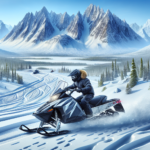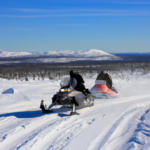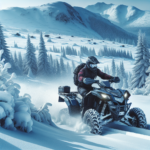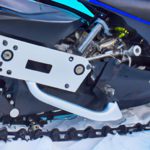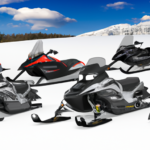Have you ever wondered about the conditions necessary for a thrilling snowmobile ride? “Do I Need Snow To Drive A Snowmobile?” perfectly answers this question and more – giving you insights into the mechanics of snowmobiles, and how various environmental factors influence their performance. This article serves as a handy guide to the do’s and don’ts of snowmobiling, so prepare to get enlightened on all things snowmobile-related.
Understanding the Basics of a Snowmobile
Snowmobiling is a popular winter activity that has evolved into a form of transportation and even a competitive sport. But before hitting the snow-covered trails, let’s break down some cherry-picked basics as understanding them will make your adventure much safer.
Definition of a Snowmobile
A snowmobile, also known as a snowmachine or sled, is a motorized vehicle for winter travel. It’s specifically designed for travel over snow and does not require a road or trail.
Key Components and Their Functions
Like your regular car, a snowmobile also has some crucial components. The engine provides the necessary horsepower; the drive belt transfers power from the engine to the tracks. The skis provide steering control, and the suspension helps to absorb shocks from the icy terrain. The heat exchangers help keep the engine cool, and the clutch helps control speed.
How a Snowmobile Works
When you start a snowmobile, the engine fires up, power is transferred through the drive belt to the tracks, and voila, you move! To steer, you shift your weight and turn the handles, causing the skis to turn left or right.
Snow as a Key Requirement for Snowmobiling
Snow, without a doubt, plays a significant role in snowmobiling.
The Role of Snow in Snowmobiling
Snow serves as the unique pavement for your snowmobile. It provides the necessary friction for the tracks to grip and propel the snowmobile forward. Plus, it provides a cool running condition for the machine.
Impact of Snow Conditions on Snowmobiling
The condition of the snow has a profound effect on a snowmobile’s performance. Fresh, powdery snow provides the best conditions, while icy or hard-packed snow can make control more challenging.
Why Snow Is Important for Protection
When you’re snowmobiling, snow provides a protective layer between the snowmobile and the ground. It cools the engine and prevents wear and tear on the machine.
Can You Drive a Snowmobile without Snow?
Though it’s not recommended, you can technically drive a snowmobile without snow. But it comes with some risks.
Possible Risks and Damages
Driving a snowmobile without snow can cause severe damage to your sled. The heat exchanger may overheat, and the tracks and skis may wear out quickly due to the lack of lubrication and cooling that snow provides.
Potential Modifications Needed
To drive a snowmobile without snow, modifications are necessary. These may include installing wheels on the skis, providing an alternative cooling system, and possibly even adjusting the suspension and steering mechanisms.
Age and Condition of the Snowmobile
An older or poorly maintained snowmobile may not withstand the harsh conditions of snowless terrains. Regular maintenance is key to ensuring it can handle the strain.
The Role of Snow Tracks in Snowmobiling
Snow tracks are another crucial component of a snowmobile.
Design and Purpose of Snow Tracks
Snow tracks are designed to provide a grip on the snow and propel the snowmobile forward. They spread the weight of the vehicle over a large surface area, preventing it from sinking into the snow.
Effects of Snow on Snow Tracks
Snow acts as a lubricant for the tracks, reducing friction and making the ride smooth and manageable. Without snow, the tracks may wear out rapidly.
Issues with Using Snow Tracks without Snow
Without snow, the tracks might wear out quickly due to increased friction. They may also struggle to grip and propel the snowmobile forward without the necessary traction.
Snow Depth and Its Impact on Snowmobiling
The depth of the snow can significantly affect your snowmobiling experience.
Minimum Snow Depth Required for safe Snowmobiling
A minimum snow depth of around 6 inches is usually recommended for safe snowmobiling. This will protect the base of your machine from impact damage.
How Snow Depth Affects Snowmobile Performance
The deeper the snow, the harder your snowmobile has to work. So, too much deep snow can make it difficult to maneuver and slow you down.
Risk of Driving with Insufficient Snow Depth
Driving with insufficient snow depth can lead to damage to your sled. It can also be dangerous as unseen obstacles can be a safety hazard.
Alternatives to Snow for Snowmobiling
Sometimes, the snow just doesn’t want to play ball, but that doesn’t mean your adrenaline rush should take a backseat.
Using Snow-Substitute Materials
Some people use snow-substitute materials such as specific types of plastic or crushed ice, which can help simulate the conditions of snow.
Indoor Snowmobiling
Indoor snowmobiling gives you a chance to enjoy the activity even when there’s no snow outside. These are specialized indoor facilities with artificial snow.
Using Snowmobiles on Sand or Grass
With appropriate modifications, snowmobiles can also be used on sand or grass. But beware, it’s not the same as smoothly gliding over snow.
Health and Safety Concerns of Snowmobiling without Snow
On the face of it, snowmobiling without snow might sound thrilling. However, it is crucial to consider health and safety aspects.
Increased Risk of Accidents
Without the cooling and cushioning of snow, the chances of overheating and collisions with land-based obstacles increase remarkably.
Potential Health Risks
The potential health risks include a higher possibility of collision injuries and, as silly as it sounds, heat strokes from the lack of winter chill.
Protection Gear and Safety Precautions
Wearing protective gear, including helmet, goggles, gloves, is always a smart move. And remember, always pay heed to the max speed as exceeding it can lead to loss of control.
Weather Conditions Suitable for Snowmobiling
Choosing the right weather conditions for snowmobiling is paramount.
Ideal Weather for Snowmobiling
The best weather for snowmobiling is when you have clear skies, temperatures below freezing, and fresh, powdery snow on the ground.
Effects of Weather Conditions on Snowmobiling
Weather conditions can have significant effects on snowmobiling. For example, warmer temperatures can make the snow too slushy, which can reduce control and speed.
Driving a Snowmobile in Extreme Weather Conditions
Snowmobiling in extreme weather conditions such as blizzards or icy conditions is strongly discouraged due to the extreme risks involved.
Maintenance and Care for Snowmobiles
This machine requires regular maintenance to keep it running smoothly.
Importance of Regular Maintenance
Regular maintenance can prevent unfortunate breakdowns, maintain the snowmobile’s performance, and extend its lifespan.
Specific Maintenance for Snowmobiles used without Snow
Snowmobiles used without snow might require more frequent servicing and part replacements as they wear out faster due to increased friction and heat.
Potential Wear and Tear
Potential wear and tear could include wearing out of the tracks, overheating of the engine, or damage to the skis. You should regularly inspect your machine for any noticeable wear.
Legal Considerations for Snowmobiling without Snow
Are there legal restrictions to drive a snowmobile without snow? Let’s find out.
State Laws and Regulations
State laws and regulations differ and so, it’s advisable to check with your local enforcement agencies before heading out with your snowmobile on a snowless day.
Possible Legal Consequences
Possible legal consequences could range from fines to confiscation of your snowmobile, or even worse, criminal charges for reckless endangerment if your actions pose a risk to others.
Relevant Permits and Licenses
Some states require special licenses and permits to drive a snowmobile. And in some cases, your insurance may not cover damage that occurs during snowless conditions.
So, do I need snow to drive a snowmobile? Ideally, yes! But with care, precaution, and appropriate modifications, it’s not entirely impossible. Just remember, safety always comes first!
- What Snowboard Bindings Should I Get? - January 23, 2024
- What Size Screws For Snowboard Bindings? - January 23, 2024
- How To Snowmobile On Water? - January 23, 2024



